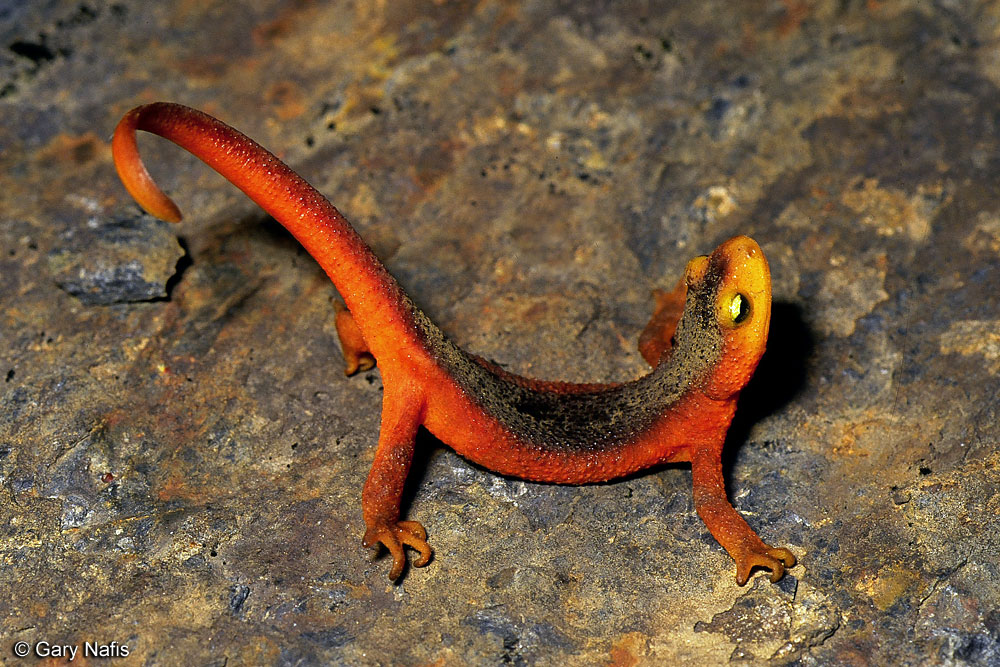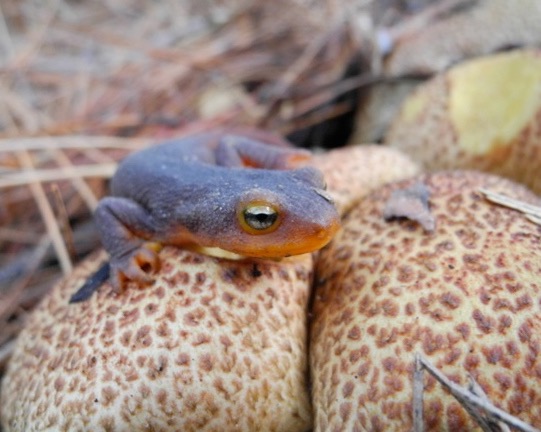
The rain season is beginning again, and that’s good news for newts! California and Sierra Newts tend to become more active with the increase in precipitation, venturing from their summer refuges in burrows, woody debris, and rock crevices, toward aquatic breeding sites.
Interested in seeing one of central Sierra’s endemic species? These adorable amphibians may be observed in oak woodland streams, camouflaged in the leaf litter. Although they generally prefer flowing streams, you may find them in ditches and other types of water bodies. If you check between late December and February, you may even see several newts in a tangle, composed of one female and multiple competing males. You may be able to observe Sierra Newts in the tributaries to Cherry Lake, New Melones Reservoir, and Hetch-Hetchy Reservoir, where they have been spotted in previous years, as individuals return to breed in the same location each year.

Not only are newts cute, easily observable wildlife, but by studying them we can better understand the health of the ecosystem. Amphibians are considered valuable indicator species, due to their sensitivity to environmental changes; they provide an early warning to biologists that an ecosystem is in trouble. According to the IUCN, amphibians are the most threatened vertebrate group on Earth, with one in three species threatened by extinction. Notably, Sierra Newts are a California Species of Special Concern, threatened by habitat fragmentation, nonnative predators and competitors, and reduced water quality.
Unfortunately, pollutants in the watershed heavily affect these charismatic creatures. For more information on how to avoid contaminating water in your backyard, read here. We can all do our part to maintain California’s unique and diverse ecosystems, starting with our endemic newts.

